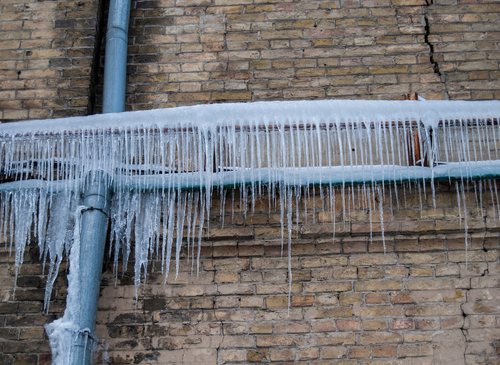Ways to Protect Pipes from Cold Weather Issues: Important Tips
Ways to Protect Pipes from Cold Weather Issues: Important Tips
Blog Article
Nearly everybody is bound to have their own individual assumption in relation to 6 Ways to Prevent Frozen Pipes.

Winter can ruin your pipes, specifically by freezing pipelines. Right here's exactly how to avoid it from occurring and what to do if it does.
Introduction
As temperature levels decline, the danger of frozen pipes rises, possibly causing costly repairs and water damages. Comprehending how to stop frozen pipes is critical for house owners in cold environments.
Understanding Icy Pipes
What creates pipelines to ice up?
Pipes freeze when revealed to temperature levels below 32 ° F (0 ° C) for expanded periods. As water inside the pipes ices up, it expands, putting pressure on the pipeline walls and possibly creating them to burst.
Dangers and damages
Frozen pipes can result in water system disruptions, home damage, and expensive fixings. Ruptured pipes can flooding homes and cause considerable structural damages.
Indications of Frozen Pipes
Determining icy pipes early can stop them from bursting.
Just how to identify frozen pipelines
Look for reduced water flow from taps, uncommon odors or noises from pipelines, and noticeable frost on exposed pipes.
Avoidance Tips
Protecting vulnerable pipelines
Cover pipes in insulation sleeves or use warmth tape to secure them from freezing temperatures. Concentrate on pipes in unheated or exterior locations of the home.
Heating techniques
Maintain interior rooms effectively heated, specifically areas with pipes. Open closet doors to enable warm air to distribute around pipes under sinks.
Securing Outdoor Plumbing
Yard hoses and outside taps
Disconnect and drain pipes garden pipes before winter season. Mount frost-proof spigots or cover outdoor taps with shielded caps.
What to Do If Your Pipes Freeze
Immediate actions to take
If you think icy pipelines, maintain faucets open to ease pressure as the ice thaws. Use a hairdryer or towels soaked in warm water to thaw pipes slowly.
Long-Term Solutions
Structural adjustments
Consider rerouting pipes away from exterior walls or unheated areas. Add added insulation to attics, basements, and crawl spaces.
Updating insulation
Purchase premium insulation for pipes, attic rooms, and walls. Correct insulation assists maintain regular temperatures and lowers the danger of icy pipes.
Verdict
Stopping icy pipes needs proactive procedures and fast reactions. By recognizing the causes, indications, and safety nets, homeowners can safeguard their pipes throughout winter.
5 Ways to Prevent Frozen Pipes
Drain Outdoor Faucets and Disconnect Hoses
First, close the shut-off valve that controls the flow of water in the pipe to your outdoor faucet. Then, head outside to disconnect and drain your hose and open the outdoor faucet to allow the water to completely drain out of the line. Turn off the faucet when done. Finally, head back to the shut-off valve and drain the remaining water inside the pipe into a bucket or container. Additionally, if you have a home irrigation system, you should consider hiring an expert to clear the system of water each year.
Insulate Pipes
One of the best and most cost-effective methods for preventing frozen water pipes is to wrap your pipes with insulation. This is especially important for areas in your home that aren’t exposed to heat, such as an attic. We suggest using foam sleeves, which can typically be found at your local hardware store.
Keep Heat Running at 65
Your pipes are located inside your walls, and the temperature there is much colder than the rest of the house. To prevent your pipes from freezing, The Insurance Information Institute suggests that you keep your home heated to at least 65 degrees, even when traveling. You may want to invest in smart devices that can keep an eye on the temperature in your home while you’re away.
Leave Water Dripping
Moving water — even a small trickle — can prevent ice from forming inside your pipes. When freezing temps are imminent, start a drip of water from all faucets that serve exposed pipes. Leaving a few faucets running will also help relieve pressure inside the pipes and help prevent a rupture if the water inside freezes.
Open Cupboard Doors
Warm your kitchen and bathroom pipes by opening cupboards and vanities. You should also leave your interior doors ajar to help warm air circulate evenly throughout your home.

I am very drawn to How To Avoid Freezing Pipes and I really hope you enjoyed reading our blog entry. Sharing is caring. One never knows, you will be doing someone a favor. Thanks a bunch for being here. Please stop by our blog back soon.
Schedule Today Report this page